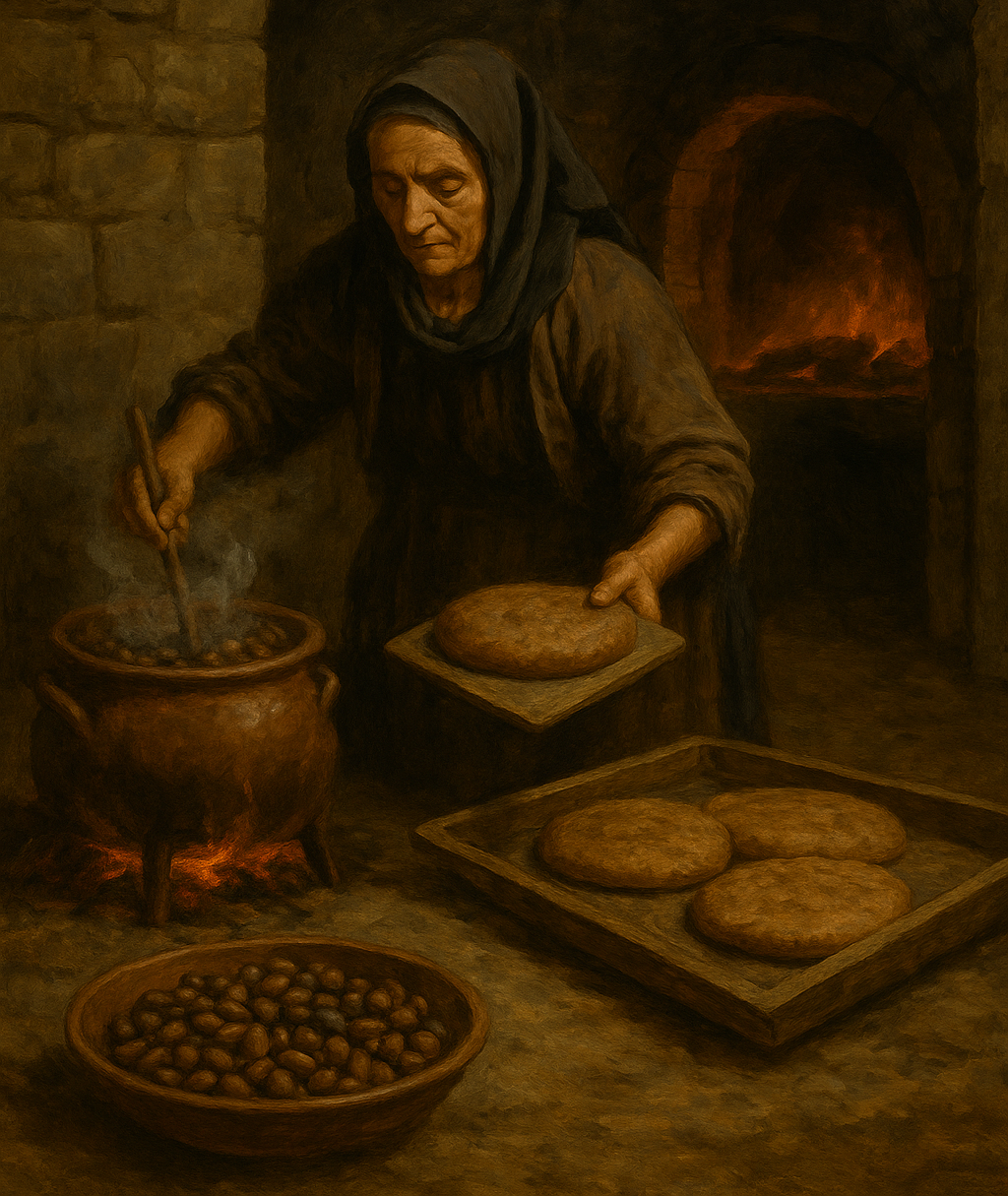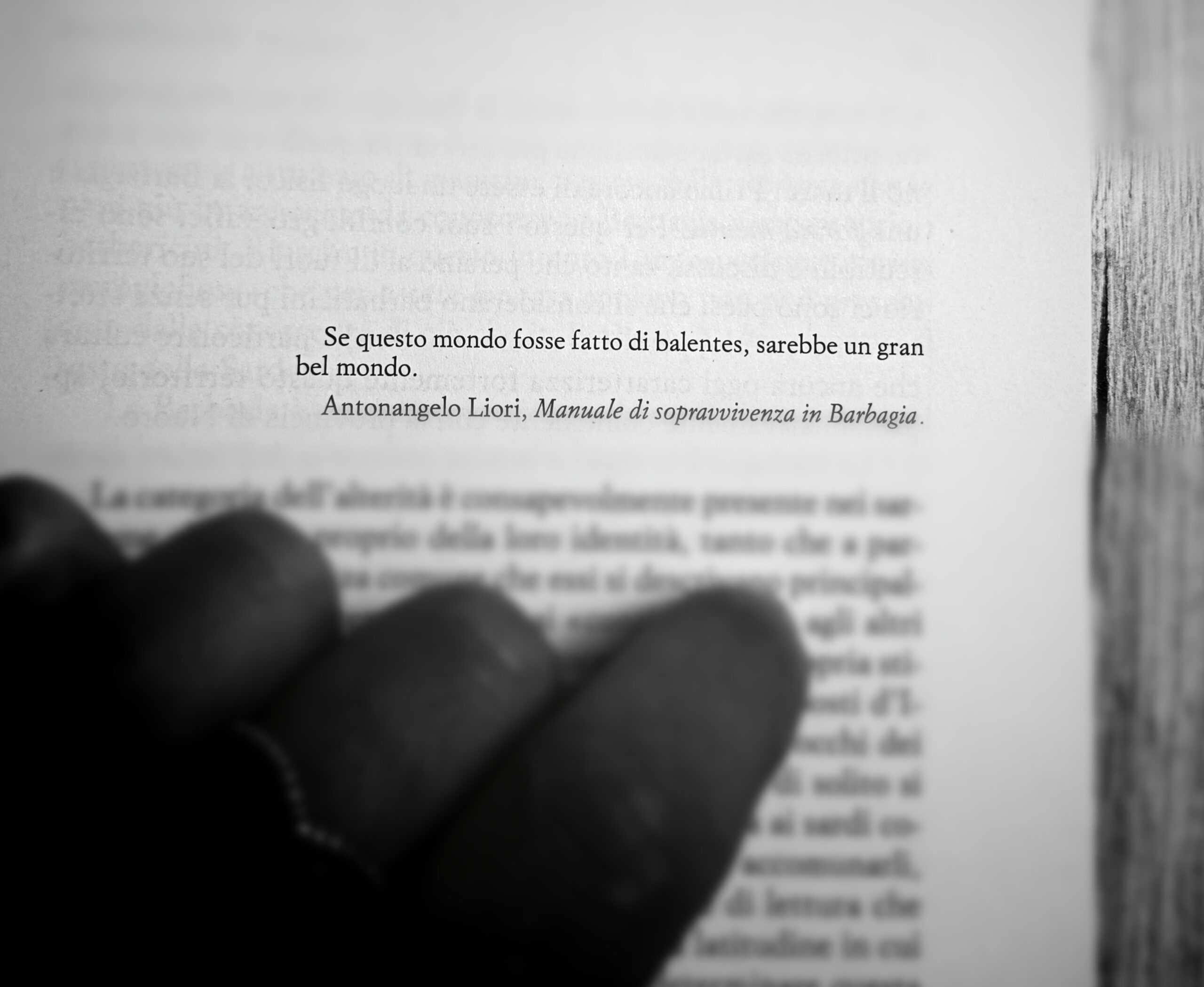Bread is a powerful cultural symbol: it represents sharing, transformation, and sacredness.
When I first heard that, long ago, in Sardinia, people ate bread made of acorns, clay, and ash, I immediately wrote a note in my notebook, because honestly, I didn’t believe it.
But if it were true, I thought, it would mean that our ancestors had the ability to transform something bitter and potentially toxic (the acorn) into something as sacred as bread: and that could only lead to a philosophical reflection.
Some time ago, I started digging around, and here I am writing an article about it, because yes, it’s true: especially in the Ogliastra region, this type of bread was made. But it was also a tradition in other parts of the world, like Kurdistan, Iran, the Iberian Peninsula, and elsewhere. In Sardinia, it seems this bread continued to be produced and eaten until the first half of the last century. The process went more or less like this: for example, in Urzulei, acorns were gathered from very specific areas, then dried, warmed over a fire, and rubbed between the hands to remove the outer layer (the endothelium). After that, they were boiled all day in a large copper pot, with water and red clay. This produced three different edible products: the boiled and drained acorns, called “sa perra ‘e lande,” which could be eaten with cheese, lard, and/or meat; “su pistiddu,” which was the remaining cooking liquid, rich in starch, turning into a kind of pudding; and finally, the cooked acorns that, when ground and kneaded with the sweet liquid from the cooking, formed small loaves that could be baked: a real bread made from acorns, called “pane ‘e lande” or “pan’ispeli.”
The fact that our ancestors could get three different foods from a potentially toxic base like acorns, during times when finding food was anything but easy, made me think.
First, because it really took an enormous amount of patience — and in a world where ready-to-eat meals and ten-minute food deliveries are the norm, the difference couldn’t be more striking. Second, because this process shows how deeply our ancestors were connected to the land, so much that they literally ingested it. Third, because elements like ash, clay, and above all, time, shaped and transformed the acorn, which eaten raw is bitter and indigestible.
Often, it’s the process that matters more than the result, and a slow process is much more effective than any shortcut. Slowness is a form of knowledge, and an essential part of it: just as patience was essential in making acorn bread, which could never have been eaten without respecting the right amount of time.
What looks toxic is not always useless: it’s worth remembering that in a world that tends to divide everything into black and white, sweet and salty, good and evil. The acorn, bitter and indigestible at first, if carefully processed, becomes nourishment, and if you think about it, the same goes for many things. Boredom, restlessness, anger, envy: if channeled and transformed, they become fuel for building our character and guiding us on our path.
And finally, ash, something we might think of as a leftover, but which, in fact, helps remove the bitterness from the acorns and sweetens them enough to make them edible. A silent lesson that teaches us that sometimes, the remains of what once burned can become like sugar in coffee: like the memory of a past suffering, which can make us wiser and more empathetic today.
Like bread, we too need to be worked, hurt, and baked in the fire of slowness to become something that can nourish those around us. And sometimes, feeling bad is just a sign of hunger: hunger for something that requires time.



